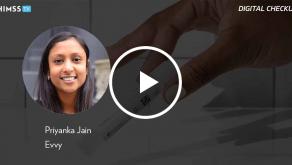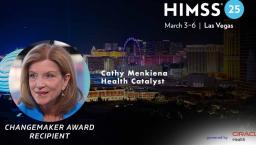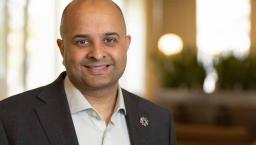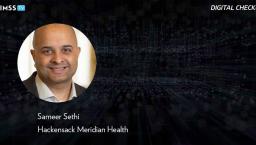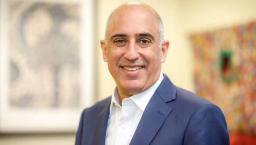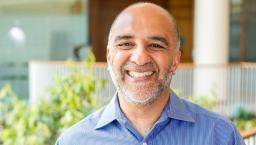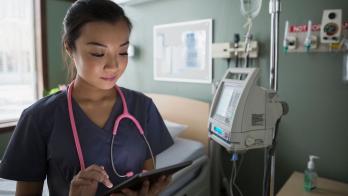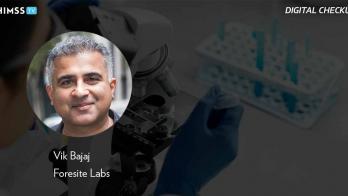The future of care: Nurses in 2030

Photo: kali9/Getty Images
We interviewed four nursing professionals from Denmark, Spain, Sweden, and France to better understand the current and future challenges in nursing, the role of technology in supporting nurses and their patients, and how the profession may evolve over the next five years.
Diversity of nursing responsibilities across Europe
Status and responsibilities of nurses vary quite a bit from country to country. In Sweden and Denmark, for example, nurses are highly recognised and trusted by patients, and they can prescribe certain medications. In France, advanced practice nurses (IPAs) have certain prescribing rights, unlike general nurses (IDEs). In Spain, nurses rely heavily on doctors and are not permitted to prescribe medications.
"Spain is missing 95,000 nurses, which means that nurses are working more to compensate, impacting the quality of the attention they give to their patients and their own health," says Montserrat Antonin, a nurse by background, a digital health consultant and ex-director of Gimbernat School of Nursing in Spain.
Spain has around 23 nurses per 100,000 habitants; for comparison, Finland and Norway, which are at the top of the chart, have 67 and 78 nurses per 100,000, respectively, based on Eurostat data. The difficulty in recruiting nurses in Spain stems from a lack of responsibility and autonomy, along with lower salaries compared to the rest of Europe. This has led many Spanish nurses to seek better-paying jobs with greater recognition in France and the Nordics.
The evolving role of nurses
Healthcare systems across Europe are under strain. Waiting times to see a doctor are increasing, especially in the medical deserts and rural areas, where some doctors are not even accepting new patients. On the other hand, nurses are seeing patients on a more regular basis, especially those who do home care. However, their ability to take action remains limited.
Nursing professionals warn that two things need to happen: The number of nursing professionals needs to increase, and care needs to become more interdisciplinary.
"We need to accelerate the number of nursing professionals to meet the needs of patients, from the point of view of problem identification, potential diagnosis and then care management," says Florence Herry, a nurse in France and founder of Libheros, a platform that connects patients with independent healthcare professionals for at-home medical services, including nursing care.
Christine Antorini, a reconverted nurse and former education minister from Denmark, envisions a future healthcare system built on greater interdisciplinary and cross-sector collaboration among all healthcare professionals, adopting a holistic approach to citizens and patients. "We must not only talk about, but also act with empathy, incorporating the patient's knowledge, preferences and ability to take active co-ownership of their situation alongside their relatives," Antorini says.
In past years, healthcare systems have been slowly shifting (and will continue to do so in the coming years) toward prevention, personalised medicine and moving the care from the hospital to the patient's home when possible.
"I see the nurse as the person closest to the patient who can teach self-care and strengthen the person-centered approach to working with resources in the patient," says Helle Sørensen, a nurse by background and now working as project manager at the Competence Center for Welfare Technology SKR in Sweden. However, although nurses are well-positioned to be a key component in that new panorama, they need broader competencies and responsibilities.
Technology is here, education needs to follow
With the evolving role of nurses, technological solutions like AI and GenAI could be a great clinical decision support by helping nurses do their job faster, reducing administrative burden and making patients' follow-up easier, leaving more time for face-to-face interactions, talking to patients and providing actual care. AI could also be a trusted source of information for making a first assessment at the patient's home by, for example, giving nurses immediate feedback on the picture of a wound or recommending a course of action based on validated medical information.
"AI agents could act as virtual assistants, helping nurses manage routine tasks, such as collecting patient data and monitoring treatments," says Antonin. Regular monitoring of patients combined with AI could help nurses detect deteriorating patients and direct them to a healthcare professional even before their health worsens.
There is a need to re-evaluate the nursing curriculum programs to include more practical education on technological solutions, data, remote monitoring, etc. Some nursing schools are already including modules to educate nursing students about new technologies. The creation and spread of specialised masters programs for nurses could enable them to expand their knowledge in certain specialties or be equipped with managerial skills to tackle new responsibilities.
Additionally, continuous education and training should be a must for nurses to keep them up to date with the latest technological developments. Virtual reality (VR) solutions, for instance, could help nurses practice certain nursing interventions from the comfort of their home. It should also include group education where nurses can learn with and from other peers about real on-the-ground experiences.
At the same time, "nurses should be included in the development of technological solutions much earlier, and the end users' needs and perspective should always be kept in mind when developing them," says Sørensen.
Vision for the future
Even though across Europe, there's a need for nurses, there is, according to Euronews, less interest in the profession amongst younger generations, especially in the Nordics. What can we do to attract more nurses in the future?
Nursing is a diverse profession with numerous career paths, offering opportunities to learn and transition easily, especially given the high demand for nurses. It’s important for nurses to share and highlight their work by showcasing their daily tasks, advanced training (such as Advanced Practice in France), and new career paths. This helps inspire colleagues and future generations to pursue and appreciate this meaningful profession.
On a higher level, for this change to happen and be successful, authorities and governments need to re-evaluate the status of nurses and the rest of the ecosystem to embrace that change.
Nurses in 2030 are not just caregivers; they're innovators, leaders and tech-savvy professionals reshaping healthcare.
Join the Nursing Summit at HIMSS Europe 2025 in Paris to discover more about the trends and upcoming impact of technology on nursing.







